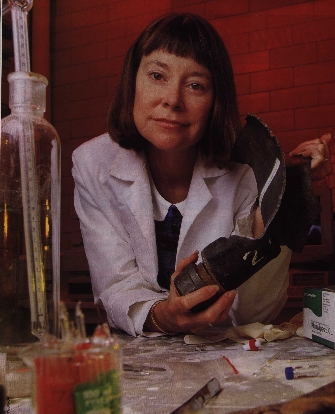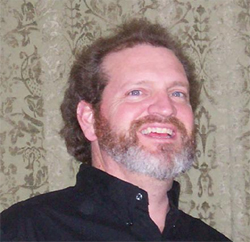Introduction to Explosives: Course Instructors
 |
Dr. Kennedy
|
|
Dr. Kennedy has worked in explosives R&D in four organizations: |
|
|
|
|
|
Dr. Jimmie Carol Oxley, Professor, Chemistry, Co-Director Forensic Science Partnership at University of Rhode Island
|
 |
| Dr. Jimmie Oxley has been working and teaching in the field of energetic materials (explosives, propellants, pyrotechnics, etc.) for the past fifteen years.At New Mexico Tech she founded an advanced program in energetic materials and at University of Rhode Island a undergraduate program in Forensic Science. She has organized and taught classes in introductory explosives, explosive safety and terrorism opportunities for government entities and private companies such as the Federal Aviation Administration (FAA) Technical Center, the FBI Quantico (Explosives Analysis); ATF Glenco, the Department of Defense, Allied Signal, Computational Mechanics Association (CMA), Iowa State Law Enforcement.She is an author of over sixty papers in the field of energetic materials and a contributor to two books on the subject.Dr. Oxley has been an invited member of four National Research Council committees [Commercial Aviation Security (advising the FAA); Marking, Rendering Inert, and Licensing of Explosive Materials (advising the Bureau of Alcohol Tobacco and Firearms and Congress); and Review and Evaluation of Alternative Technologies for Demilitarization of Assembled Chemical Weapons (advising the Army); Advanced Energetic Materials (DoD)].She has been a program reviewer for the FBI, FAA, DOE, and NSF and organized a number of technical meetings and chaired numerous technical sessions. Dr. Oxley was a chairperson in the Department of Justice Technical Working Group for Bombing Scene Investigation authoring the brochure on “A Guide for Bombing Scene Investigation.Dr. Oxley spent an academic sabbatical at Los Alamos National Laboratory, where she holds the status of visiting scientist.Dr. Oxley and Dr. Kennedy have team taught together numerous times over the years both as a part of the New Mexico Tech Explosive Safety Course and CMA.In addition they were both contributing authors to a text on energetic materials. | |
|
|
|
 |
Dr. Keith Thomas
|
| Dr. Thomas has worked in explosives R&D for to government
laboratories: Los Alamos National Laboratory, 2000-present - His research has been focused on diagnostics and experiments on detonators, firing systems, and miniature explosives systems for numerous experiments including integrated warhead tests. He has collaborated with Jim Kennedy to apply various diagnostics to miniature explosive systems in area known as microdetonics. He has collaborated with professors and engineers from universities and research labs to design integrated micrelectronic switch devices, detonators, laser systems, and firing systems for single and multipoint slapper detonators. He enjoys going to the lab and blowing things up. Air Force Research Laboratory 1993-2000 - At Eglin AFB, he focused on the design, manufacture and testing of detonators and explosive systems for various fuze and warhead development programs. He developed integrated microelectronic systems for initiating explosive trains and explosive diagnostics. He was part several design teams that developed multi-mode warheads, air-to-air and penetrating weapon systems. His devices have been tested in experiments and systems on test ranges and in flight tests at several locations in both the United States and the United Kingdom. |
|
|
|
|
|
Dr. Maurice Marshall
|
|
| Dr. Marshall is Head of the Forensic Explosives Laboratory, Defence Evaluation & Research Agency, Fort Halstead, Sevenoaks, Kent. (UG6).His duties include responsibility for management of a group of approximately 50 scientific and support staff engaged in scientific investigation of the illegal use of explosives. He is responsible for the technical content and direction of research programs into improved forensic techniques, the provision of a forensic explosives service to UK and foreign police forces, other Government departments, and bona fide customers, the training of expert witnesses, and ensuring that the quality and content of scientific work meets the needs of the judicial system. He is an active participant in various classified international programs aimed at prevention of the illegal use of explosives by terrorists. | |


 |
|